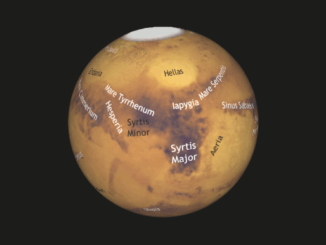
Get ready for viewing Mars this summer during its closest approach for 15 years
At the end of July 2018, Mars makes its closest approach to Earth since the memorable opposition of 2003. This summer sees the Red Planet big and bright, low in the south around 1am BST, but now’s the time to train your eye to detect prominent Martian surface features – dust storms permitting! We present our interactive Mars Mapper to help plan your observations.


